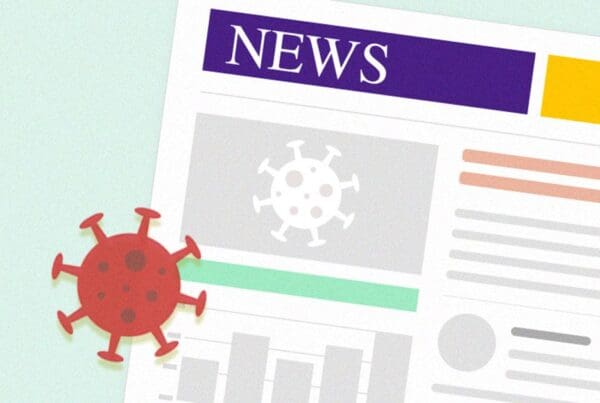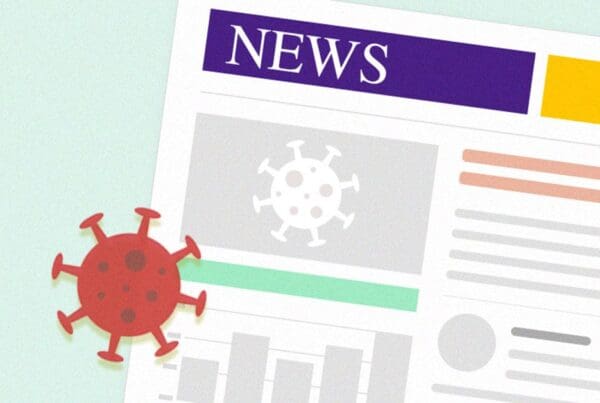Quick Read:
- While hospitalization rates remain low for COVID-19, there is a rise in positive cases in the community
- Although masking while using public transportation and airplanes is no longer mandatory, UW Medicine recommends masking in these settings
- Paxlovid is available throughout the community to treat mild-to-moderate COVID-19 in people at risk for developing severe disease – find out more
- Register for an April 25 provider webinar on COVID-19 therapeutics
- Policy reinstated for the mandatory use of respirators for all staff working in hospitals and clinics
Much like the chilly, gray weather that we are experiencing, COVID-19 continues to be a part of our lives. It may seem like the world is moving on, believing the pandemic is behind us but unfortunately, as I write this, cases continue to increase, though more slowly than last week. Despite the uptick in cases across the state, we have only 24 patients across the UW Medicine system, most in acute care, and that is good news for all. This is more than last week, but still nowhere near what we experienced in January and February.
Healthcare workers are testing positive at higher rates than in recent months, and more and more of our colleagues are having to stay home from work as they get infected or exposed at home, while on vacation, or in the community. All of this can put an undue strain on the system, so I encourage you all to be cautious and to follow our protocols closely and do all you can to avoid infection, even if the risks seem lower this time around.
Even with the increased infection rates in the community and among employees, we believe the current surge will be shorter-lived than the surges we’ve seen over the past two years. That said, a federal judge’s ruling that ended the Centers for Disease Control and Prevention (CDC) mandate for masking on public transportation and airplanes, and the Transportation Security Administration’s (TSA) decision to follow this change, puts our communities at higher risk. Between more public spaces in which masks are no longer required and increased mobility (for example, spring break activities) we can expect to see COVID-19 cases continue to increase, though hopefully we will not experience another more infectious or more virulent variant.
My advice? I strongly recommend wearing masks—KN95 or N95 (like the 3M Aura or V-Flex models) masks, ideally—if you’re traveling or anticipate being in crowded areas. Judicial rulings aside, masks are still an important measure against the spread of COVID-19 and its variants, especially when combined with vaccinations and boosters, and improving indoor air quality.
Should you test positive, we are looking for ways to increase access to the therapeutic Paxlovid for the treatment of mild-to-moderate COVID-19 in people who are at risk for developing severe disease. This Fact Sheet contains information on the risks and benefits of taking this medicine. If you have COVID-19 symptoms, you may contact your healthcare provider. If you do not have one, there are 11 Test to Treat locations in the King County area that can be found by entering your zip code into this locator. More information is available on the Public Health Seattle & King County Public Health Insider.
If you are a UW Medicine provider, please consider registering for a webinar on COVID-19 Therapeutics on Monday, April 25, from noon to 1 p.m. with Drs. Shireesha Dhanireddy (infectious diseases) and Rupali Jain (pharmacy). The session will cover topics including oral antivirals and IV therapies for COVID-19 and will review UW Medicine resources. If you’re unable to attend, the session will be recorded for future access. Please register in advance. Providers can learn about the high-risk conditions that are appropriate for therapy on the CDC website. The UW Medicine Clinical Algorithm is available here.
This past Monday, April 18, we reinstated a policy requiring all healthcare workers in our UW Medicine hospital and clinic facilities, including clinical spaces and shared offices, to wear respirators (N95, PAPR, or CAPR) in place of medical masks. The increase in the number of cases and the impact on healthcare workers has made this change necessary. Universal respirators are another layer of protection if we need to move to CDC contingency isolation and quarantine guidance as we did in January and February.
This is a reinstatement of the same policy we had in place in January and February. As a reminder, we are making this change for the following reasons:
- The King County transmission rate has increased over the past several weeks and is now at 185.2 cases per 100,000 residents in the last 7 days.
- More than 160 healthcare workers (HCWs) are out due to COVID-19 infection or exposure. This is a 200-percent increase from 50 employees in mid-March. Some personnel have been at work during their infectious period prior to their diagnosis, leading to transmissions in the workplace, large exposure investigations, and many healthcare workers having to undergo surveillance testing.
- Depending on how many HCWs are out due to infection and exposures, we may need to move to the CDC contingency level for HCW isolation and quarantine. Universal respirators are an added layer of safety should we need to make this change.
Our goal with these changes is to maximize the safety for patients, visitors, and staff in our healthcare facilities.
UW Medicine COVID-19 Activity Summary

Local/National/Global Epidemiology
King County: Public Health – Seattle & King County is reporting 386,806 total cases and 2,728 deaths as of Wednesday, April 20. The number of new positive tests is currently at 185.2/7 days/100,000 people (community transmission level = low).
Washington: The Department of Health reports 1,479,559 cases and 12,650 deaths as of April 19.
United States: The Centers for Disease Control and Prevention reports 53,345 new cases, 80,588,854 total COVID-19 cases and 987,034 deaths as of April 20.
Global: The WHO COVID-19 Dashboard reports 504,079,039 confirmed COVID-19 cases and 6,204,155 deaths as of April 20.
While I’m sure we’re all feeling some degree of disappointment to see cases rising and the need for more extensive safety measures returning, all of what we’re doing now is in the interest of preventing another surge that sends us back to the darkest days of the pandemic. Now, let’s hope the weather follows suit and we can look ahead to sunshine and lots of time spent outdoors, enjoying our beautiful corner of the earth.
Sincerely,
John Lynch, MD, MPH
Medical Director, Infection Prevention & Control
Associate Medical Director, Harborview Medical Center
Division of Allergy & Infectious Diseases, UW School of Medicine

